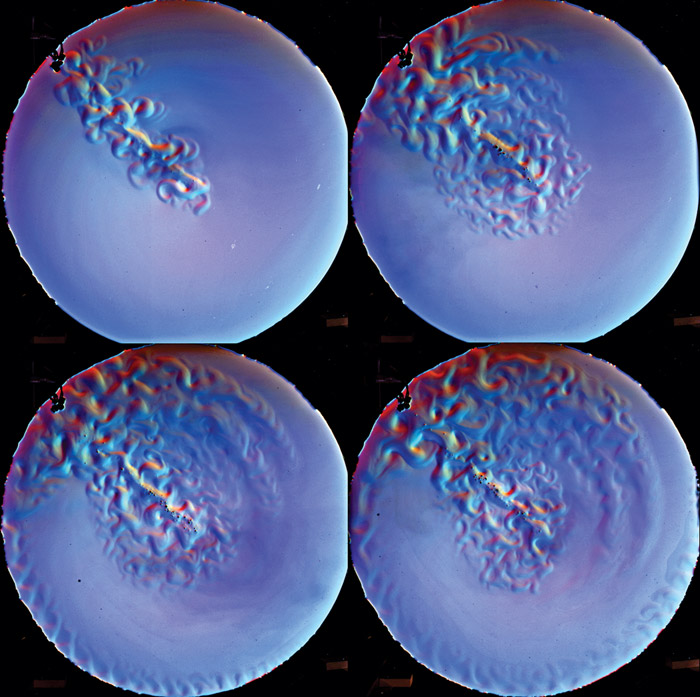Modeling atmospheric and oceanic flows
DOI: 10.1063/PT.3.1308
From the Northern Hemisphere’s meandering jet stream to oceanic currents and gyres to the color bands of Jupiter, large-scale fluid motions are familiar and important. But obtaining a detailed understanding of such flows is difficult, since they involve variations in density, pressure, temperature, Coriolis effects, and other factors. One way of modeling them in the laboratory is with a layer of water or other liquid in a rotating container. The rotation gives the liquid surface a parabolic shape that simulates the variation of the Coriolis force with latitude. Moreover, reflections from the parabolic surface allow small variations in surface height to be optically measured across the entire sample.
These images, taken by Yakov Afanasyev of the Memorial University of Newfoundland and colleagues over the course of 30 minutes, show the evolution of flows in a 1.1-meter-diameter water tank making 24 counterclockwise rotations per minute. The center of the tank corresponds to a planet’s North Pole; the rim, to the midlatitudes. A heater, visible at the rim at 10 o’clock, drives the flows, similar to how topography or thermal gradients might affect flows on a planetary scale. The observed variations in the water’s height, related to the subsurface flows, reveal jets, eddies, and planetary waves and provide insights into atmospheric and oceanic dynamics. (Images submitted by Yakov Afanasyev.)
To submit candidate images for Back Scatter, visit http://www.physicstoday.org/backscatter.html

Images submitted by Yakov Afanasyev of the Memorial University of Newfoundland





